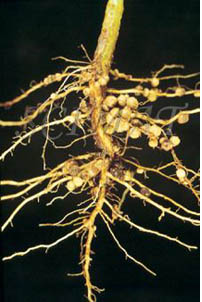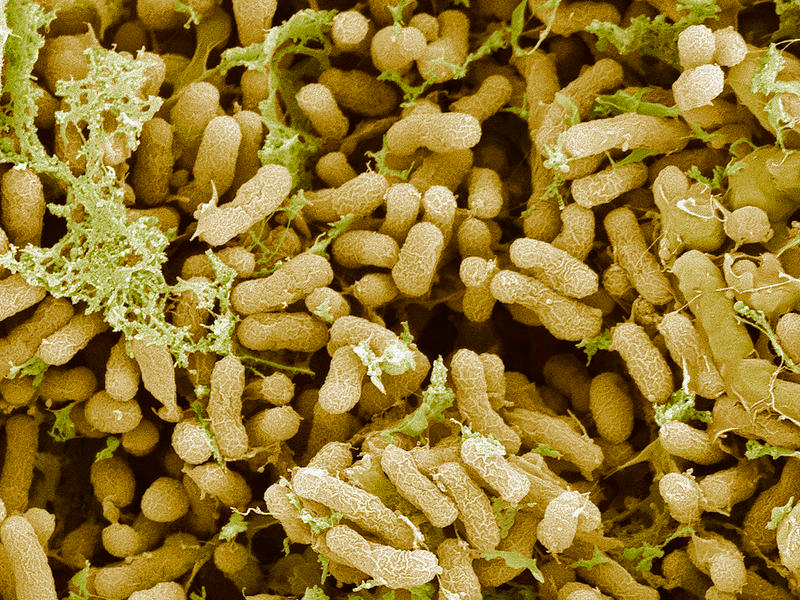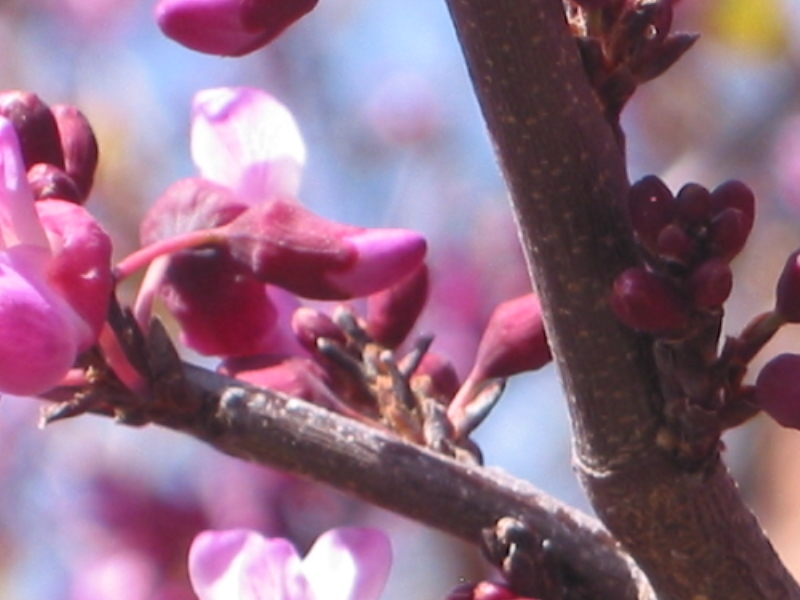Plant Guild #4: Nitrogen-fixing Plants

What is the first of the three chemicals in bagged NPK fertilizer? Nitrogen. Nitrogen is so important for the health of plants that isolated into a chemical, along with phosphorus and potassium, it can keep plants alive and active. But as the human body becomes ill when it is just fed junk food each and every day, so will your plants when they can’t assimilate the other nutrients in the soil.
Again, in permaculture it is all about the microorganisms in the soil. We provide food, water and shelter for them, and they open up the nutrients that are already in the soil on which the plants feed. When you dump a lot of anything on the soil, its going to kill microbes. Dumping bagged NPK fertilizer on the soil burns the creatures in the soil, just as if you poured acid on them. They die, and it will be awhile before the irrigation and rains delutes those chunks of fertilizer enough so that microbes can again live in the soil surface, but by then its time to dump more chemicals on the ground. The plant gets a high, but will never be able to adequately draw out the trace minerals it really needs to complete its diet, which soil microbes provide to it, because they are burned out of existence by the chemicals.
It would be pompous for us the believe that plants, which began about 450 million years ago on Earth, just fiddled around until their true keepers (humans) came along and evolved enough to produce chemical nitrogen to dump onto their roots.

In fact, there are many ways that nature gets nitrogen into the soil. Lightning strikes, rainfall, cut greens, fresh poop, fallen ripe fruit, all help. Most of all, there are soil bacteria which can transform atmospheric nitrogen into fixed nitrogen: inorganic compounds that are usable by plants. More than 90% of nitrogen harvesting is done by these organisms. There are non-symbiotic (free-living) bacteria called cyanobacteria (or blue-green algae), and there are symbiotic bacteria that form relationships with particular plants. These symbiotic bacteria, namely rhizobium and Frankia, invade the root hairs of select plants and create enlargements on the roots called nitrogen nodules. This process sounds and looks similar to wasps stinging oak branches and creating galls; however, the frankia are helping the plant; symbiotic rather than parasitical. Atmospheric nitrogen is inert, therefore unusable by the plant. When the bacteria get their little hands into it, by changing it into ammonia and nitrogen dioxide the nitrogen is freed up to be used as the plant and the bacteria needs. When the plant roots die, the nitrogen is released into the soil. So, the plant, with the help of the bacteria, is sucking nitrogen out of the air, breaking it down and releasing it as a usable nutrient source in the soil. Who needs chemical fertilizer?

Only certain plants still have the capability to join in this symbiotic relationships; some families have just a few species that can do it, and it is unknown if they developed the talent, or if the rest of the family eventually lost the talent. Legumes and all members of the Fabaceae family is the most commonly known and used nitrogen fixing family. Peas, beans, cowpeas, and clover are all commonly used cover crops. When mowed they produce both green mulch and release nitrogen into the soil. However, there are many shrubs and trees that are also nitrogen fixers. California Redbud tree, mesquite, mountain mahoganies, alders, ceanothus (California lilac), sea buckthorn, bayberries, cassia, acacias, lupines, and many more. There are also riparian plants such as azola, gunnera, some lichen and cycads which fix nitrogen with cyanobacteria.

In fact, 40-60% of native plants are nitrogen fixers. When you are planning your garden, your vegetable beds, your native Zone 5, and especially your orchards, you should be incorporating that percentage of nitrogen fixers into your design. Many of these can be mowed as cover crops, or used as quick-growing nursery plants, as canopy, or as chop-and-drop.
Chop-and-drop is when you grow your own fertilizer around your crop plants, and instead of purchasing and distributing fertilizer, a couple of times a year you take out a hand scythe and quickly cut back the nitrogen-fixing plants, scattering the tops around your food plants as mulch. When the top of the nitrogen-fixing plant is severely cut, the plant doesn’t need as much root base so it allows some to die, which distributes nitrogen into the soil. A double-whammy for your soil, and a small, easy and satisfying workout for you. Shazam.
Very important: when planting nitrogen-fixing plants there has to be the compatible bacterium in your soil for the whole thing to work. Purchasing inoculated seed for the first sowing on new planting areas is very important. As different bacteria react with different plants, study up some to make sure you are buying the right stuff if you are going to inoculate seed yourself. Then make sure that you are providing those tender bacteria with food, water and shelter – habitat – so that they can live and prosper. And what is the best habitat for soil microbes around food producing plants? Yep, mulch. Sheet mulch especially, and several inches of chopped leaves best of all.
You can find the entire 9-part Plant Guild series here: Plant Guilds: What are they and how do they work? The first in a series. , Plant Guild #2: Canopy , Plant Guild #3: Sub-Canopy , Plant Guild #5: Mining Plants, Plant Guild #6: Groundcovers, Plant Guild #7: Vines, Plant Guild #8: Insectiaries, Plant Guild #9: The Whole Picture.